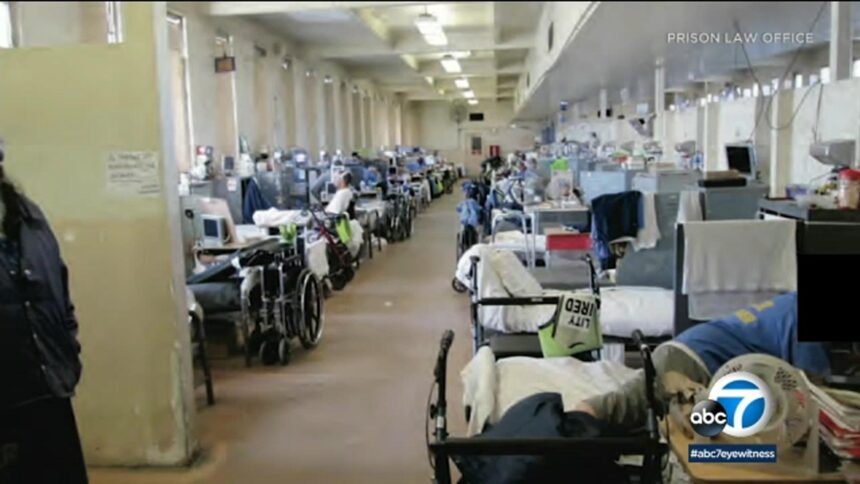Title: Bridging the Gap: California Inmates Pursue Higher Education Amid Technology Barriers
In the sprawling landscape of California’s correctional facilities, a quiet revolution is underway. Inmates now have the opportunity to enroll in college courses, a chance to transform their futures and equip themselves with knowledge that could pave the way for successful reintegration into society. However, this initiative is hampered by significant challenges. Many prisoners find themselves grappling with a stark digital divide, lacking reliable internet access and essential technology to fully engage in their studies. With limited resources and outdated educational tools, the pursuit of higher education within these walls is often fraught with obstacles, raising important questions about equity, rehabilitation, and the future of education behind bars. As California pushes forward with these educational reforms, the stark realities of technological inequity cast a shadow over the potential benefits, prompting a closer examination of what it truly means to educate in a modern prison system.
Access to Education Behind Bars: The Challenges of Limited Technology for Incarcerated Students
In California, inmates have the opportunity to enroll in college courses, yet the absence of reliable internet access significantly hampers their educational experience. While many institutions are eager to provide college education to incarcerated individuals, they face formidable barriers due to limited technology. This situation results in a gap between the educational ambitions of these students and the tools they need to succeed. Educators often employ alternative methods such as physical textbooks, but the lack of interactive materials and online resources places incarcerated students at a disadvantage compared to their peers outside the prison system. The struggle isn’t just about getting an education; it’s about the quality and effectiveness of the learning experience.
Several factors contribute to the challenges faced by incarcerated students, including:
- Insufficient technological resources: Many facilities lack adequate computers and tech training, leaving inmates ill-prepared for advanced coursework.
- Minimal access to online learning platforms: Restrictions on internet use prevent students from utilizing valuable educational tools and engaging with instructors in real-time.
- Limited course offerings: The range of available classes is often constrained, which may not align with inmates’ educational goals or career aspirations.
These issues not only limit the inmates’ ability to achieve academic success but also perpetuate cycles of disadvantage upon their release. Addressing these technology-related challenges is crucial to fostering an educational environment that can truly empower incarcerated individuals and facilitate their reintegration into society.
Bridging the Digital Divide: Innovative Solutions for Providing Online Learning in Prisons
In California, the opportunity for inmates to pursue college education is a critical step toward rehabilitation; however, the reality of accessing these programs often highlights a significant gap. While some correctional facilities have introduced limited online courses, issues such as lack of internet access and minimal technological resources complicate the situation. Many inmates must rely on outdated computers or printed materials, creating barriers that hinder their educational progress. The paradox of providing advanced learning opportunities while lacking essential technology only exacerbates the challenges faced by inmates eager to better their lives.
Innovative solutions are needed to help bridge this gap and ensure that incarcerated individuals can engage in meaningful educational experiences. Possible strategies include:
- Partnerships with educational organizations that specialize in prison education to provide tailored resources.
- Utilization of offline learning platforms that allow access to course materials without internet access.
- Investment in portable technology such as tablets pre-loaded with educational software and books.
- Training for staff to assist inmates in navigating digital learning environments.
| Challenges | Potential Solutions |
|---|---|
| Lack of internet access | Implement offline learning tools |
| Limited tech resources | Invest in portable devices |
| Inadequate support | Staff training programs |
Empowering Change: Recommendations for Enhancing Educational Resources for Inmates in California
To address the disparities in access to educational resources for inmates in California, several recommendations can be proposed for enhancement. First, the integration of robust technology infrastructures within correctional facilities is crucial. This includes:
- Establishing secure internet access where permissible, enabling participation in online courses and resources.
- Providing inmates with devices that are tailored for educational purposes, ensuring a safe learning environment.
- Implementing training programs for correctional staff to assist inmates in navigating educational technologies effectively.
Furthermore, collaboration between governments, educational institutions, and non-profits can be instrumental in developing comprehensive educational programs that cater specifically to the needs of the inmate population. A focus on curriculum diversity, including vocational training and life skills, can significantly enhance reintegration outcomes. Key strategies include:
- Partnering with local colleges and universities to facilitate distance learning initiatives.
- Creating mentorship programs that connect inmates with educators and industry professionals.
- Utilizing feedback from inmates to adapt curricula and ensure that learning programs are relevant and effective.
Final Thoughts
In conclusion, while California’s initiative to offer college-level courses to inmates represents a significant step towards rehabilitation and education, the stark realities of limited technological resources and inadequate internet access continue to present formidable challenges. As prisons strive to uphold educational standards and prepare inmates for reintegration into society, the gap between educational opportunity and the tools necessary for success remains a pressing issue. Lawmakers, educators, and advocacy groups must come together to address these barriers, ensuring that all inmates can fully benefit from these educational programs. Only through comprehensive reforms can the promise of education be realized in the correctional system, paving the way for a more equitable and just future for individuals seeking to transform their lives behind bars.









